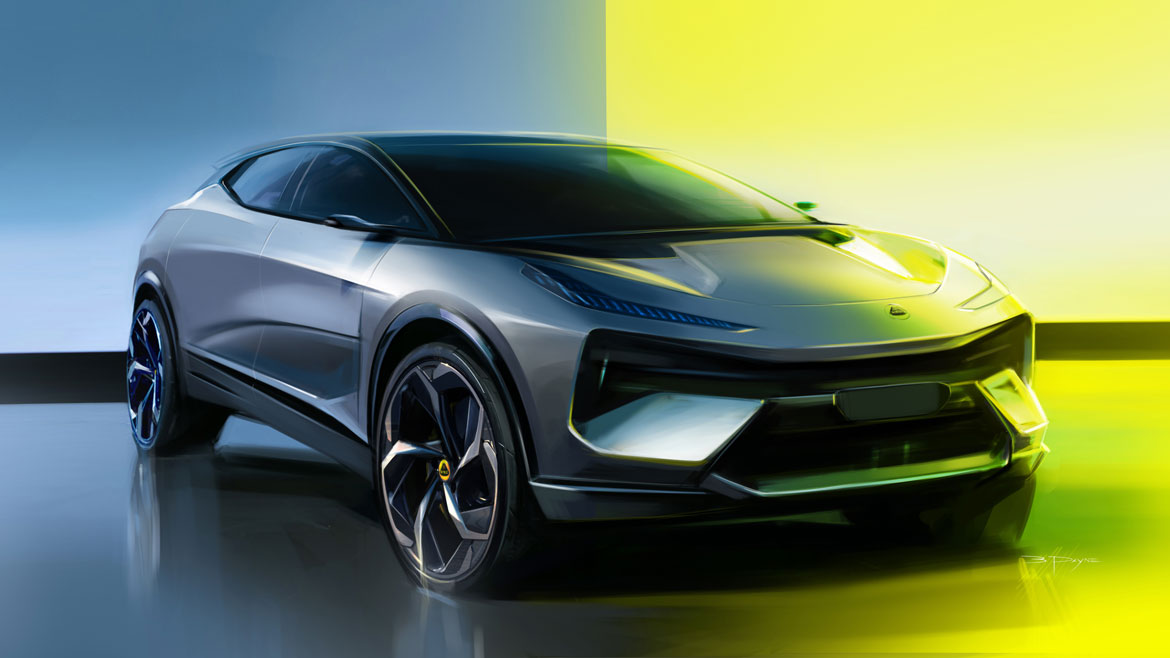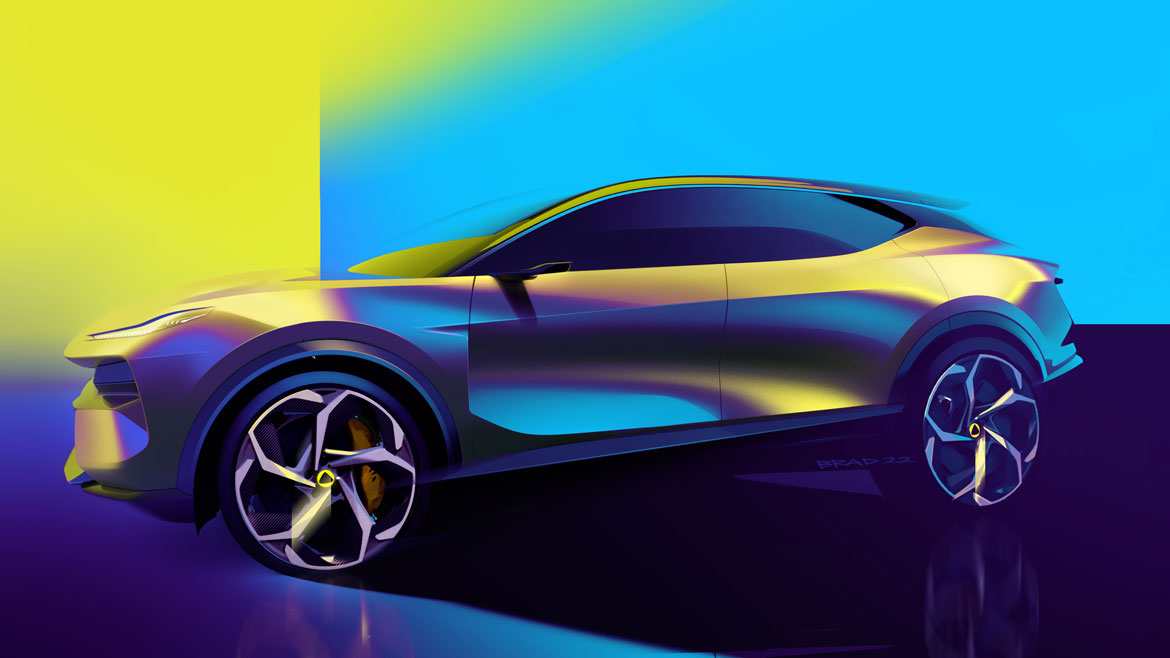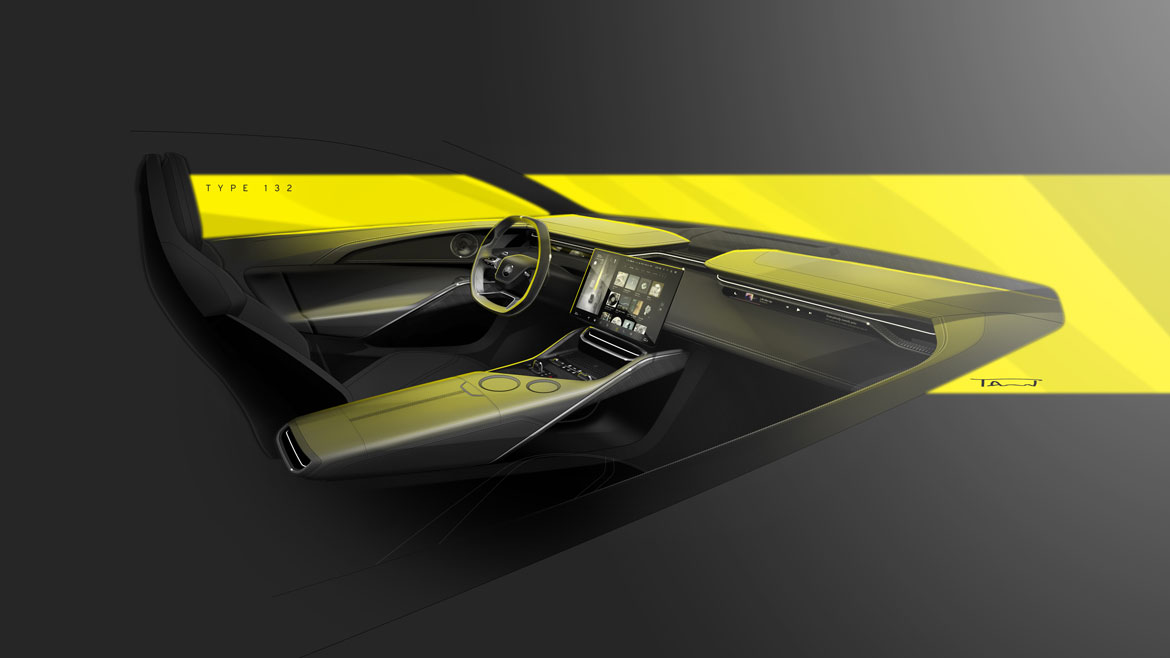The Lotus Eletre has ushered in an unprecedented season for the British manufacturer, poised to transform itself into a producer of high-performance, all-electric cars. The Eletre is Lotus’ first Suv and we drove it in Norway and found it to be uncommonly agile despite its size, thanks to a real sports car set-up and powerful engines: 605 hp for the Eletre S and even over 900 for the Eletre R. The designers chose not to differentiate the two versions of the SUV aesthetically. Below is the design story of the Lotus Eletre, published in Auto&Design no. 254.
The team behind the new Lotus Eletre had a tricky job designing the British brand’s first ever SUV. They knew they had to reference the brand’s sports cars but they also wanted to avoid the profusion of styling details that overcomplicate modern SUVs. “Overly stylized designs tend to last a very short time,” Peter Horbury, who recently passed away and who oversaw the project as Senior Vice President of Design at Lotus, told us.
Recalling the past
China-built SUV would need to fulfil the local buyers’ desire for visual strength in their luxury car, reference the brand’s more delicate sports cars, and appeal to a European buyer. It would also need a design that suggested it was powered by electricity, giving the car a visual edge over internal combustion engine rivals such as the Lamborghini Urus, Aston Martin DBX and Porsche Cayenne.
”It doesn’t look like anyone”
“I think that was the biggest thing in the architecture, to try and get this cab-forward look,” Payne, head of Lotus Tech Creative Centre (LTCC) in Warwickshire, told Auto&Design. “To most people they’ll look at the product and understand that it doesn’t look like a Porsche or an Aston Martin.” The sports car references are everywhere. The blade-like nose and the thin LED headlights hint at the new Emira sports car while underneath them, the car becomes porous with aerodynamic vents and cooling ducts in a nod to Lotus’ Evija electric hypercar.
A pair of “cantilevered winglets” at the rear
The lower part of the grille meanwhile is divided into a series of triangles that can open and provide cooling to the battery if needed. This feature, which Lotus has copyrighted, is more form/function cleverness that “promotes engineering to the A-surface” Payne said.
Payne and his team had to be clever when it came to the rear. A pair of “cantilevered winglets” at the top of the rear hatch keep the air attached down the curved hatch before it separates or is manipulated by the active spoiler.
Tech and sporty interiors
Inside the car, Lotus designers again needed to balance the Chinese need for technology with those of European drivers, who want a more driver-focused environment. The tech element is taken care of with up to five screens, including two to display images from the camera-mirrors (where markets allow), two in the ‘technology ribbon’ that runs from driver to passenger, and one massive 15.1 in touchscreen in the centre. This swings flat onto the instrument panel when not needed and much of the driver information is delivered by a standard head-up display.
Lightweight and sustainable materials
Interior materials were chosen for lightweight and sustainability, so Kvadrat wool blend features as well as microfibre suede material. That the car was designed in such a short time during the ravages of the Covid pandemic was a triumph of remote working between UK, Sweden and China. “The pandemic could have ruined this, but we were still able to do design reviews,” said Horbury.
(Full article in A&D n. 254)















